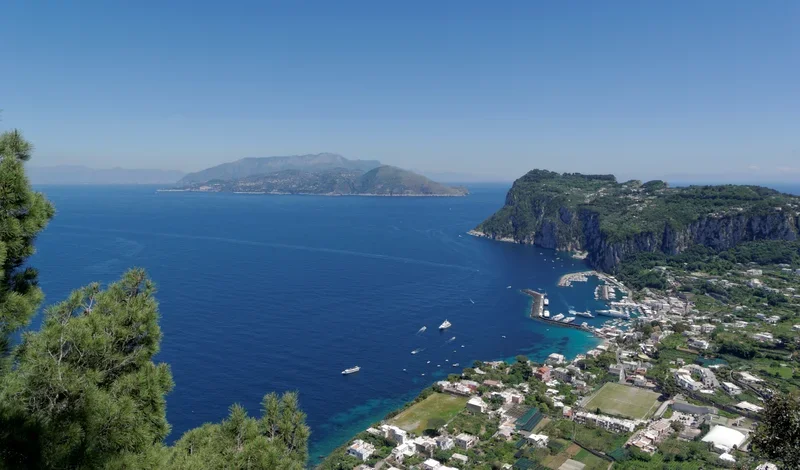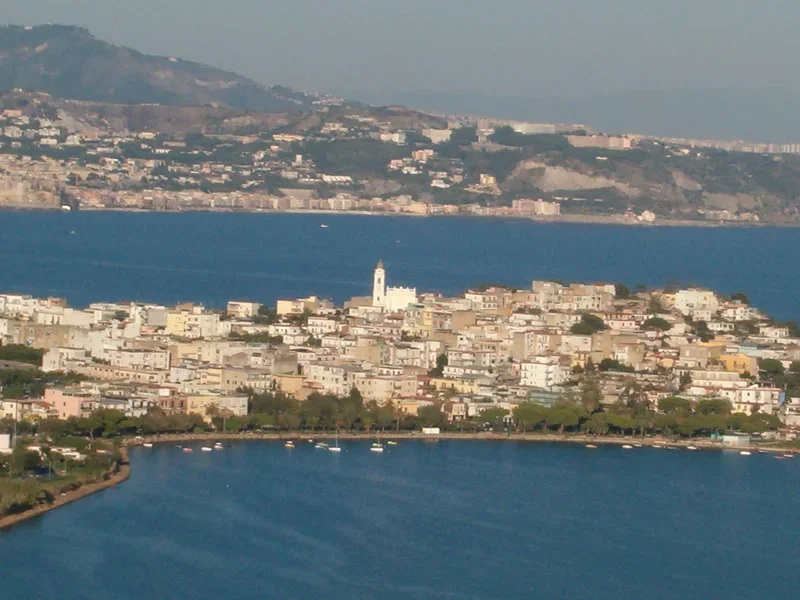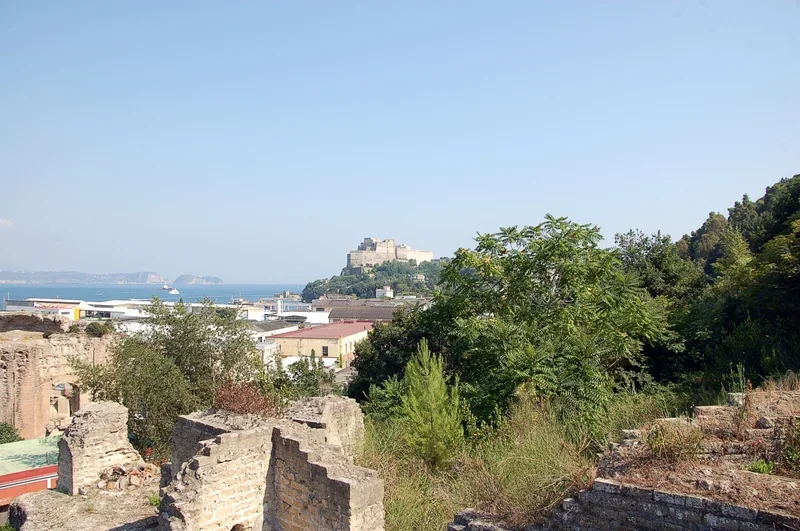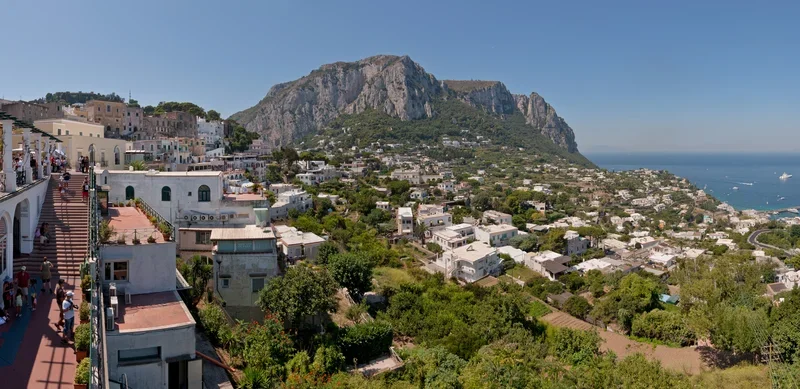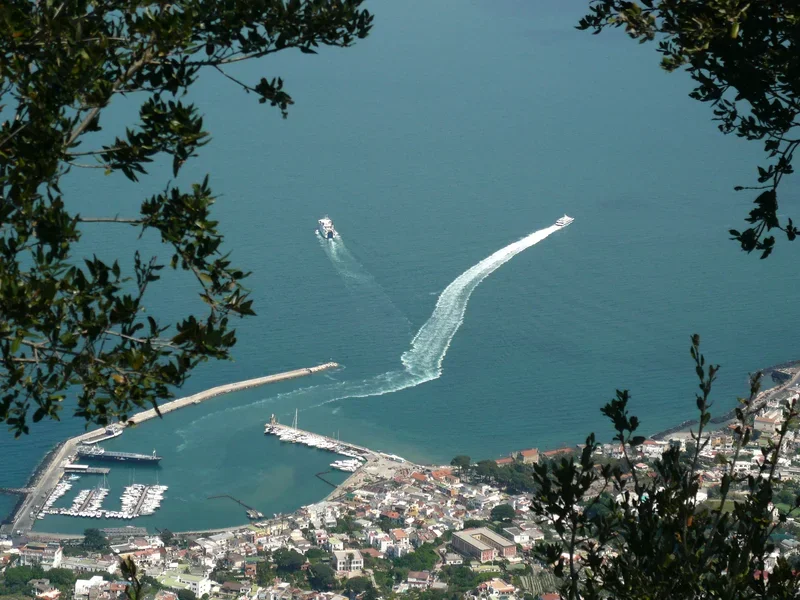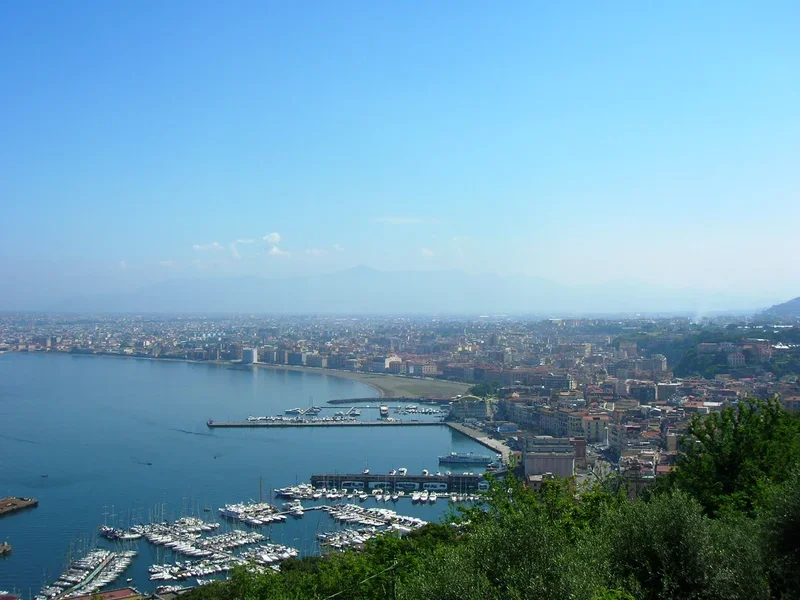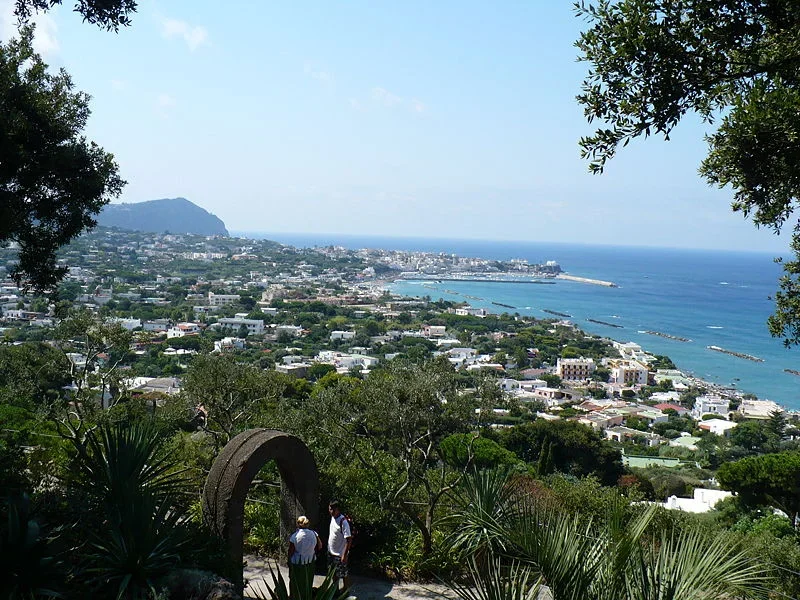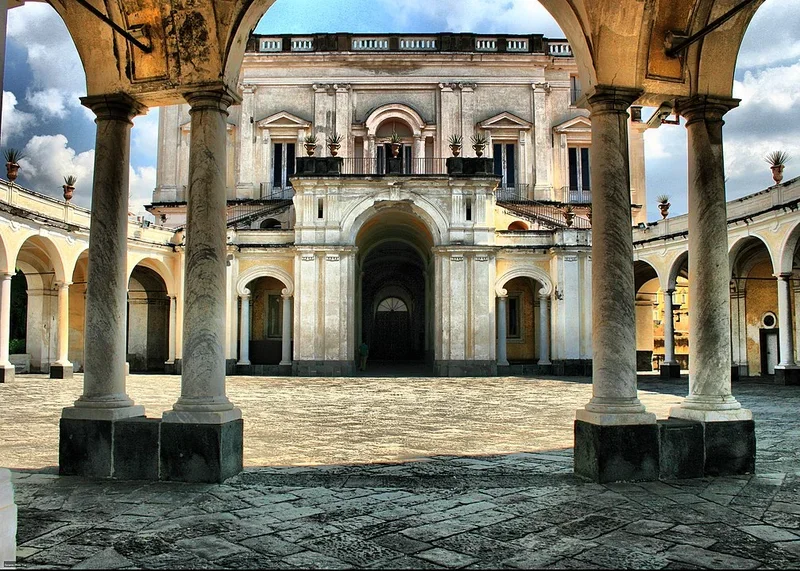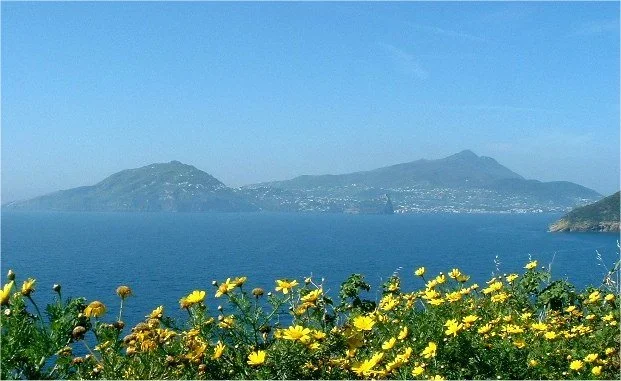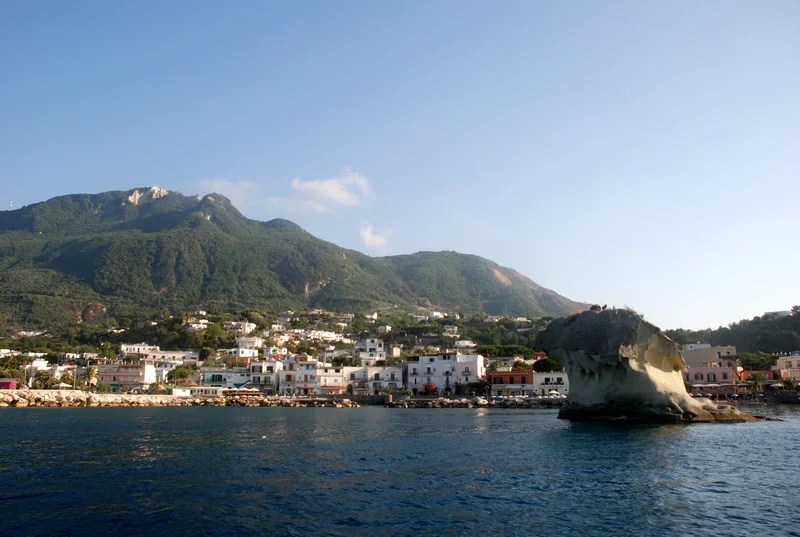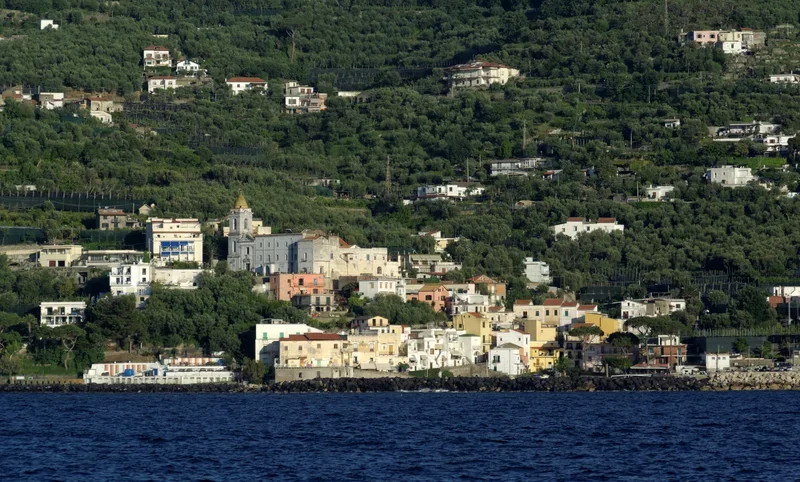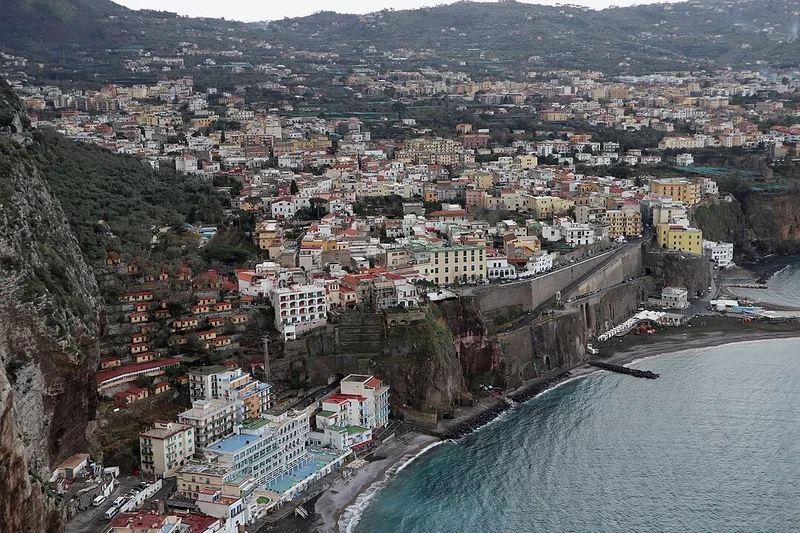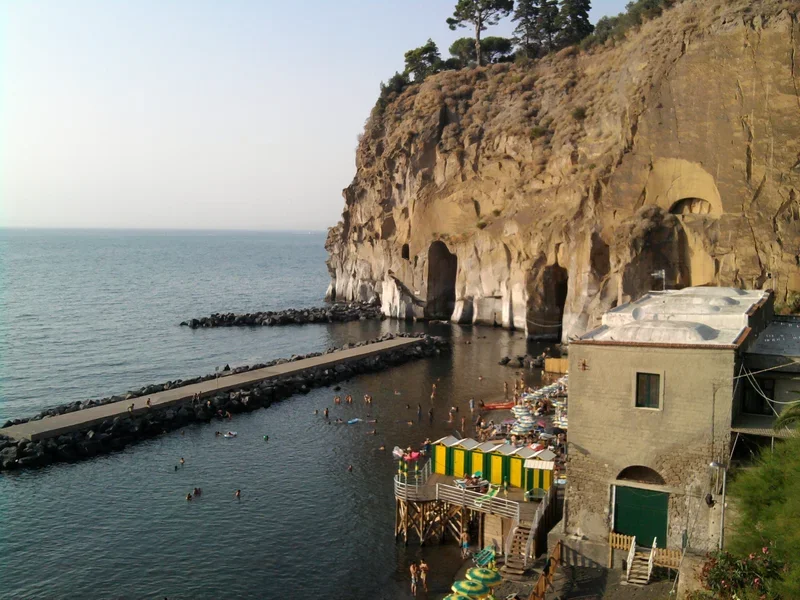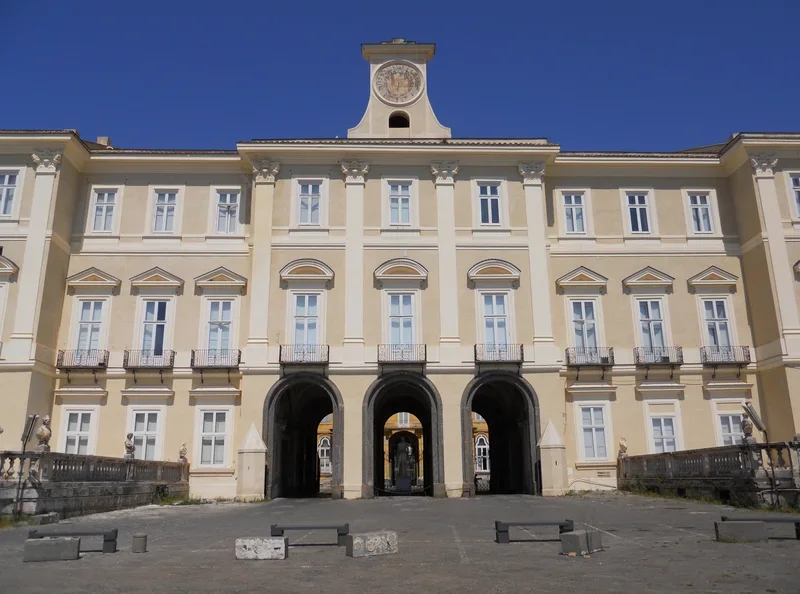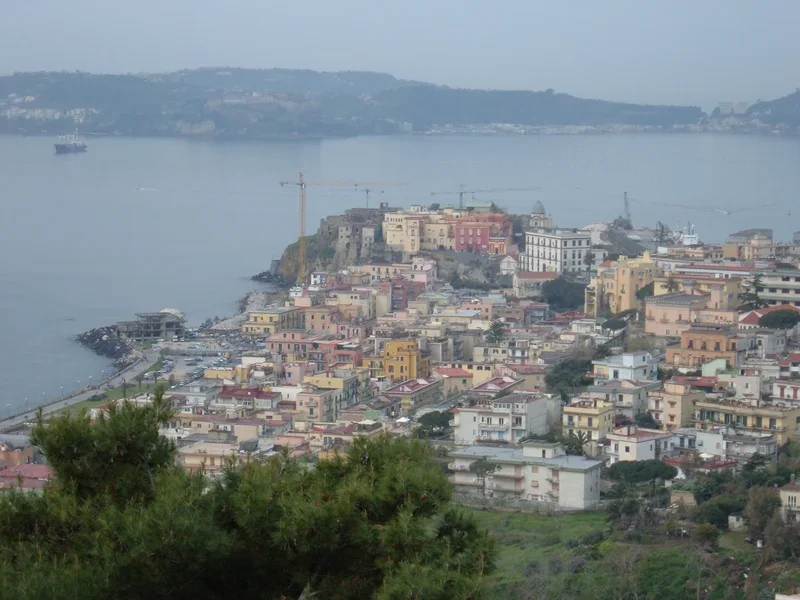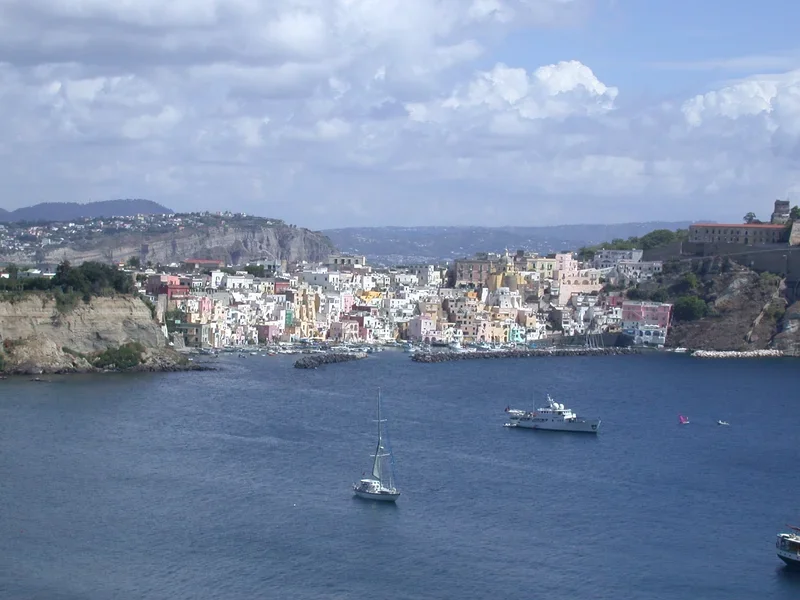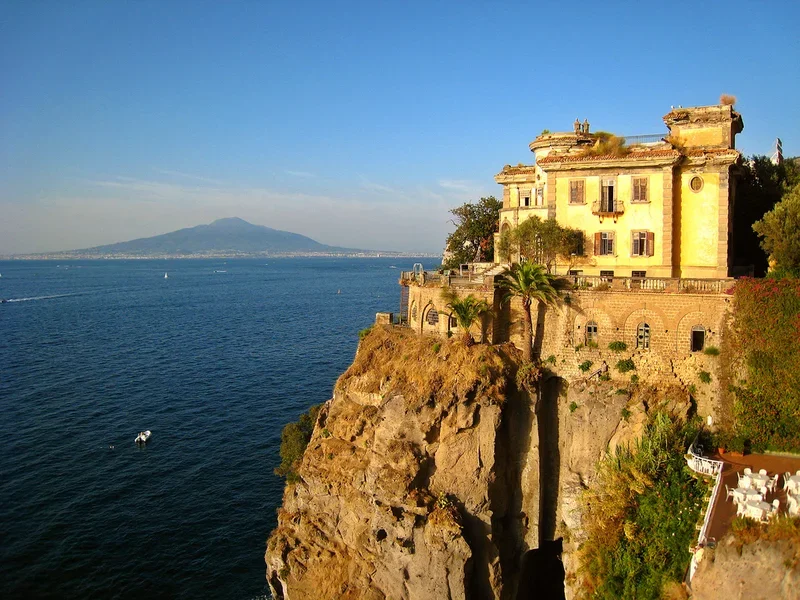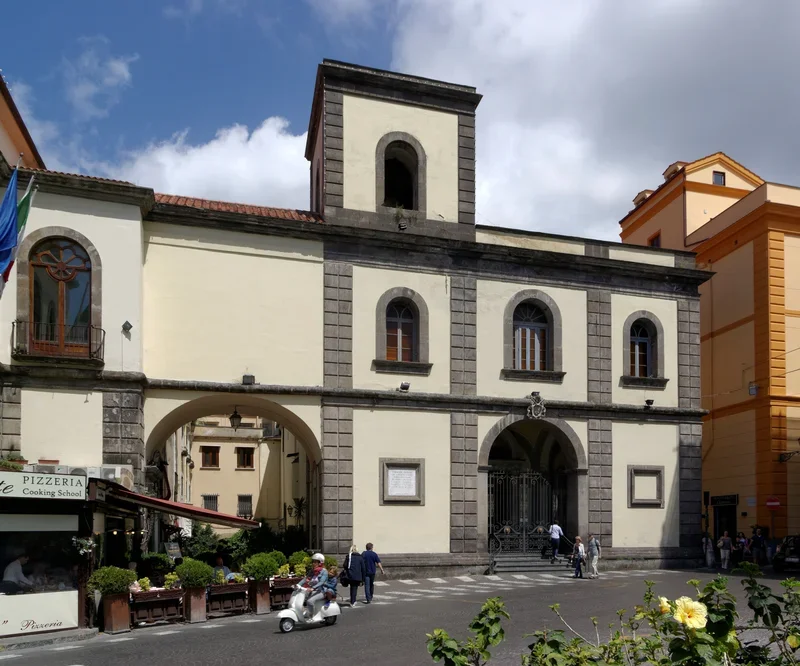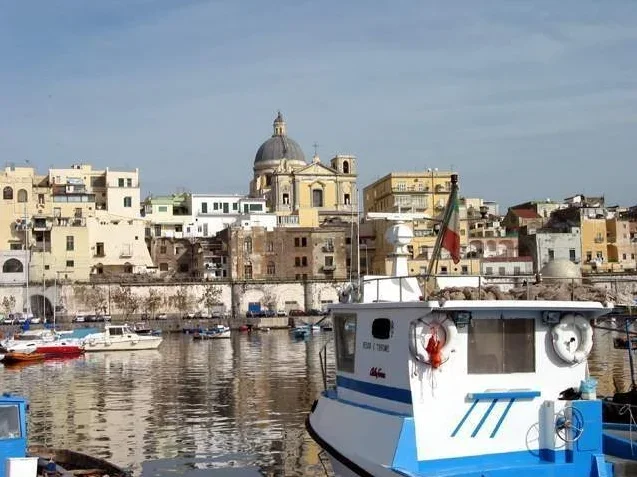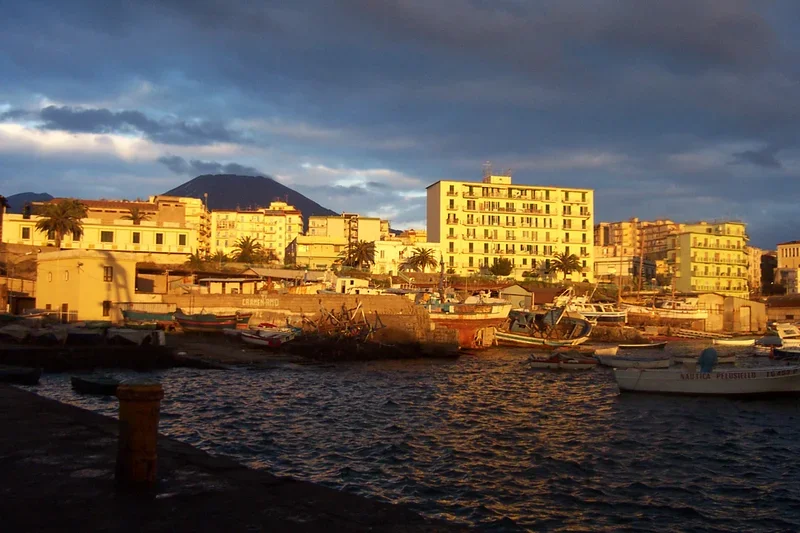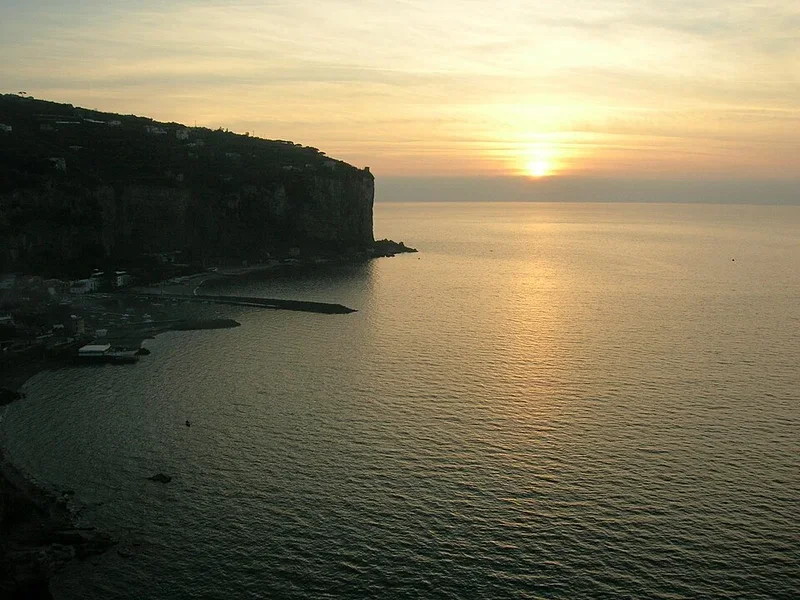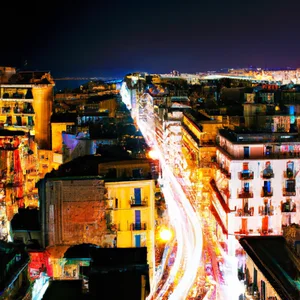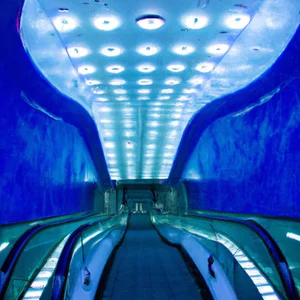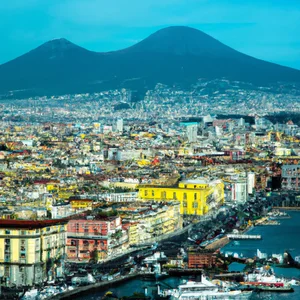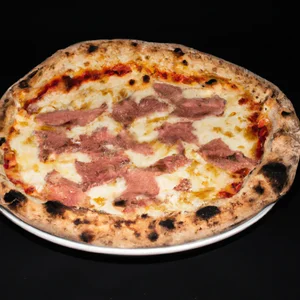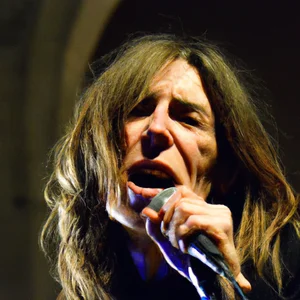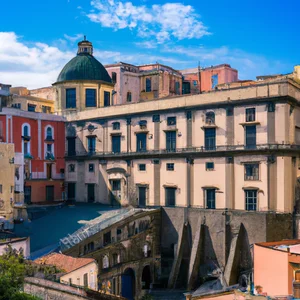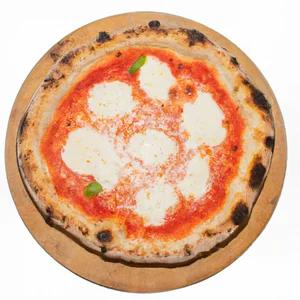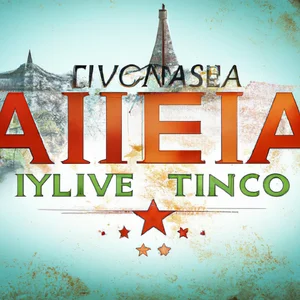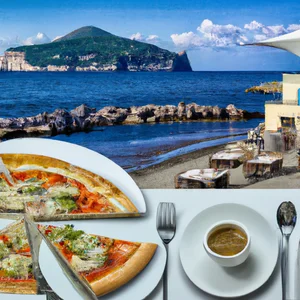Book your experience
MADRE Museum
The MADRE Museum, acronym for Donnaregina Museum of Contemporary Art, represents one of the most fascinating cultural institutions in Naples, a place where art and innovation intertwine in a unique historical and architectural setting. Located in the heart of the city, the museum aims to be a point of reference for contemporary art, offering visitors an immersive experience in the world of modern art and contemporary artistic practices. Its history, which has its roots in the desire to enhance and promote creativity, unfolds through a path that has been able to adapt and respond to the challenges of the time.The architecture of the museum, conceived as a dialogue between ancient and modern, is a strong attraction for design enthusiasts. Each room and each exhibition space tells a story, inviting visitors to explore the permanent collections and temporary exhibitions that host works by internationally renowned artists. From the celebration of recognized masters to exhibitions dedicated to emerging talents, MADRE stands out for its ability to surprise and stimulate curiosity.But the museum is not just a place of exhibition: it is also a lively center of cultural activities, creative workshops and special events that involve the community and visitors. With a rich and varied programme, MADRE confirms itself as a meeting point for artists, curators and enthusiasts, making Naples not only a tourist destination, but a true hub of contemporary culture. In this article we will explore the ten main aspects of the MADRE Museum, offering a complete overview of what makes this museum a treasure to discover for those who visit the city.
History of the MADRE Museum
The Donnaregina Museum of Contemporary Art, known as MADRE, is located in the heart of Naples, inside an ancient 13th century convent, dedicated to Santa Maria Donnaregina. Its official opening dates back to 2005, but the project for the creation of the museum has roots that date back to the 1990s, when the idea of a museum dedicated to contemporary art in a city rich in history and culture began to take shape.
The museum was conceived as a space to promote contemporary art, not only in Italy, but also internationally. Its foundation is the result of the desire to respond to the growing demand for exhibition spaces for modern and contemporary art, in a context which, despite having a rich artistic tradition, was lacking in structures dedicated to these expressive forms.
Over the years, MADRE has hosted numerous exhibitions, events and activities that have helped consolidate its position as one of Naples’ leading cultural centers. The museum not only collects works by contemporary artists, but also serves as a platform for artistic research and experimentation, aimed at involving the public in innovative artistic experiences.
Furthermore, the MADRE has been the subject of various restoration and redevelopment initiatives, in order to preserve and enhance the historicity of the exhibition spaces, while at the same time making them functional for contemporary art. The fusion between ancient and modern is one of the distinctive elements of this museum, which reflects the complex and stratified identity of Naples.
Architecture and Design of the MADRE Museum
The MADRE Museum, acronym for Donnaregina Museum of Contemporary Art, is located in the heart of Naples and represents an important example of contemporary architecture in a historical context. The structure was built inside an ancient 16th century convent, the Donnaregina Monumental Complex, which has been expertly renovated to house modern and contemporary works of art.
Architectural Project
The renovation project was managed by the architect Paolo Portoghesi, who was able to integrate historical and contemporary elements, creating a space that stimulates dialogue between the past and the present. The use of modern materials, such as glass and steel, contrasts with the ancient walls, creating a dynamic and welcoming environment.
Design of Exhibition Spaces
The design of the exhibition spaces was conceived to enhance the works of art in a fluid and interactive context. The rooms are characterized by studied lighting and a modular layout, which allows the spaces to be adapted to the different exhibitions. This approach makes the museum a versatile place, capable of hosting a vast range of events and artistic installations.
Significant Architectural Elements
Among the most significant architectural elements is the large atrium, a central area that acts as a meeting point and filter between the different sections of the museum. Furthermore, the museum is equipped with a roof garden, which offers a green area in contrast with the surrounding urban environment and represents a place of relaxation and reflection for visitors.
Accessibility and Sustainability
The MADRE Museum is designed with accessibility in mind for all visitors. The spaces are easily accessible to people with disabilities, thanks to ramps and lifts. Furthermore, sustainable practices were adopted in the renovation process, helping to reduce the environmental impact of the structure.
In summary, the architecture and design of the MADRE Museum not only reflects the modernity of contemporary art, but also a deep attention to the historical and cultural context of Naples, making it a unique and fascinating place to explore.
Permanent Collections of the MADRE Museum
The Donnaregina Museum of Contemporary Art, known as MADRE, houses one of the most important collections of contemporary art in Italy. The museum’s permanent collections are a reflection of its mission to promote contemporary art through works ranging from the 1960s to the present day.
Composition of the Collections
MADRE’s permanent collections include works by Italian and international artists, with a particular focus on those who have had a significant impact on the contemporary art scene. Among the works on display, there are installations, sculptures, photographs and videos, all capable of stimulating reflection and dialogue with the public.
Artists Represented
Among the best-known artists whose works are part of the collection we can mention:
- Alighiero Boetti - famous for his works that explore the concept of order and chaos.
- Michelangelo Pistoletto - pioneer of Arte Povera, whose works reflect the interaction between art and society.
- Marina Abramović - known for her performances that test the limits of body and mind.
- Richard Serra - his imposing sculptures in corten steel are a point of reference in the world of contemporary art.
Themes and Reflections
The permanent collections address complex and current themes, such as memory, identity, technology and social and ecological issues. Each work is curated to stimulate critical thinking and encourage dialogue among viewers. The museum is committed to creating an environment in which the public can actively interact with the works and reflect on their meaning.
Meetings and Guided Tours
MADRE also offers guided tours of the permanent collections, allowing visitors to deepen their knowledge of the works and artists. These meetings are an excellent opportunity to discover the stories behind the works and to better understand the context in which they were created.
In conclusion, the permanent collections of the MADRE Museum not only showcase contemporary art, but also serve as a platform for discussion and reflection on the most relevant issues of our era.
Temporary Exhibitions
Temporary Exhibitions
The MADRE Museum in Naples is known not only for its permanent collection, but also for its temporary exhibitions which offer a unique opportunity to explore contemporary works by emerging and established artists. These exhibitions are carefully curated and often reflect current and relevant themes in the global art scene.
Types of Exhibitions
Temporary exhibitions can range from site-specific installations to monographic exhibitions dedicated to individual artists. Often, the museum collaborates with international galleries and institutions to present works that are not normally accessible to the Italian public.
Programming and Curators
The programming of temporary exhibitions is managed by a team of curators who select artists and works based on criteria of innovation and cultural relevance. Each exhibition is accompanied by a series of events, such as meetings with the artists, conferences and workshops, which enrich the visitor’s experience.
Visibility and Promotion
The museum uses various channels to promote its temporary exhibitions, including social media, newsletters and collaborations with other cultural institutions. Effective communication plays a vital role in ensuring that the public is informed about new exhibitions and associated events.
Accessibility of the Exhibitions
The temporary exhibitions are designed to be accessible to a wide audience, with visual paths that guide visitors through the works. Furthermore, the museum offers guided tours and information materials to facilitate understanding of the works on display.
Famous Artists and Works
The MADRE Museum in Naples hosts a vast range of works by internationally renowned contemporary artists, making it an important point of reference for modern and contemporary art. Among the most famous artists whose works are exhibited in the museum, we find:
1. Jeff Koons
One of the most influential figures in contemporary art, Jeff Koons is known for his iconic works such as “Puppy”, a flower sculpture representing a puppy dog. At MADRE, it is possible to admire some of his creations, which explore the boundary between art and commerce.
2. Anish Kapoor
Famous for his monumental sculptures and innovative use of color, Anish Kapoor has created works that stimulate the perception and sense of space. At MADRE, his works challenge the traditional conception of sculpture and installation.
3. Francesco Clemente
An artist of Italian origin, Francesco Clemente is known for his vibrant and dreamlike style. His works at MADRE reflect a deep interest in spirituality and cultural identity, using a variety of techniques and materials.
4. Michelangelo Pistoletto
Pioneer of poor art, Michelangelo Pistoletto is famous for his installations and works that invite reflection on social and political themes. At MADRE, his work encourages dialogue between art and society.
5. Marina Abramović
Considered one of the most important contemporary performance artists, Marina Abramović explores the limits of the body and human experience. His works at MADRE offer a unique and engaging experience, questioning the relationship between artist and audience.
The museum is also a place where you can discover works by emerging and lesser-known artists, creating a dynamic and ever-evolving panorama. The variety of works on display offers visitors the opportunity to explore different art forms and creative approaches, making each visit a unique experience.
Activities and Workshops
The MADRE Museum in Naples offers a variety of activities and workshops to involve the public and stimulate creativity. These events are designed for different age groups and interests, making the museum a dynamic and interactive place.
Educational Laboratories
The educational workshops are organized for students of schools of all levels. These programs are designed to foster the learning of contemporary art through practical and interactive activities. Students can work with artists and educators to explore specific themes and artistic techniques.
Family Activities
The museum also offers special family activities, which encourage parents and children to discover art together. These events can include interactive guided tours and creative workshops, thus encouraging a playful approach to contemporary art and culture.
Workshop for Adults
For adults, MADRE offers in-depth workshops on various artistic techniques and themes related to contemporary art. These meetings are led by artists and experts in the sector and are an excellent opportunity to experiment with new forms of expression and broaden your artistic knowledge.
Special Events
The museum organizes special events, such as meetings with artists, conferences and book presentations, which further enrich the cultural offering. These events offer visitors the opportunity to interact directly with the artists and explore current issues in the art world.
In summary, the MADRE Museum’s activities and workshops are an excellent way to explore contemporary art, stimulate creativity and engage a diverse audience in an active dialogue with art.
Special Events
The MADRE Museum in Naples is a dynamic center of contemporary culture and hosts a variety of special events throughout the year, ranging from conferences and debates to artistic performances and concerts. These events are designed to engage audiences and stimulate dialogue on relevant issues in the world of art and society.
Types of Events
Among the special events, the museum organizes:
- Meetings with artists: Opportunities to dialogue directly with artists and better understand their creative process.
- Live performances: Artistic expressions that may include dance, music and theater, often inspired by works in the museum.
- Laboratories and workshops: Practical activities intended for everyone, from children to adults, to explore art and creativity in an interactive way.
- Conferences and seminars: Meetings with industry experts who discuss various aspects of contemporary art, culture and society.
Collaborations and Partnerships
The museum frequently collaborates with other cultural institutions, universities and artists, creating a network of exchanges that enriches the panorama of special events. These collaborations allow us to offer unique and multidisciplinary experiences to the public.
Programming and Information
To stay updated on special events, you can visit the MADRE Museum’s official website or follow their pages on social media. The schedule is usually published a few months in advance, allowing visitors to plan their visit based on ongoing events.
Access and Opening Times
Access to the MADRE Museum
The Donnaregina Museum of Contemporary Art, commonly known as the MADRE Museum, is located in the heart of Naples. Entrance to the museum is accessible to all, including people with reduced mobility, thanks to adequate structures that facilitate access.
Opening Hours
The museum is open at the following times:
- Monday: Closed
- Tuesday to Sunday: 10:00 - 19:30
It is important to note that the last entry is allowed one hour before closing.
Holidays and Special Closures
The museum may be closed on some national and local holidays. We recommend checking the official website or contacting the museum directly for updated information on any closures.
Free Access
The museum offers free entry on some occasions, such as the first Sunday of the month, and for specific groups, such as students and the unemployed. It is advisable to check the conditions of free access on the official website.
Tickets and Prices
The MADRE Museum, located in the heart of Naples, offers several ticket options for visitors, making access to its collections and exhibitions accessible to all.
Types of Tickets
Tickets may vary depending on the age and category of visitors:
- Full price ticket: For adults, it is generally priced at €10.
- Reduced Ticket: For students, over 65s and groups, the cost is €7.
- Free Ticket: Entry is free for children under 14 years of age, disabled people and their companions.
Promotions and Subscriptions
The museum also offers annual passes and special promotions during particular events, which can further reduce costs for repeat visitors.
Purchase of Tickets
Tickets can be purchased directly at the museum ticket office or online through the official website of the MADRE Museum. Booking in advance is recommended, especially for the most popular temporary exhibitions.
Payment Methods
The museum accepts cash and credit card payments, making access easier for all visitors.
Additional Information
For further details on tickets, any special offers or for clarifications, you can contact the museum’s customer service via their website.
How to Get to the MADRE Museum
The Donnaregina Museum of Contemporary Art, known as MADRE, is located in the heart of Naples and easily reachable by various means of transport.
By Car
If you arrive by car, you can use the Piazza Cavour car park, which is a short distance from the museum. Please note that the center of Naples has limited traffic areas, so check the access restrictions.
By public transport
The museum is well connected by public transport. You can take:
- Metro: The Università stop on Line 1 is the closest. From there, a short walk will take you to the museum.
- Bus: Several bus lines stop near the museum, including lines 201, 202 and R2.
On Foot
If you are already in the historic center of Naples, the museum is easily reachable on foot. From Via Toledo, you can follow the signs for Piazza Municipio and then head towards Piazza Donnaregina.
By bicycle
Naples is developing more and more cycle paths. You can reach the museum by bicycle and take advantage of the bicycle parking areas located nearby.
Regardless of the means of transport chosen, the museum is a fascinating place to visit and easily accessible to all visitors.

